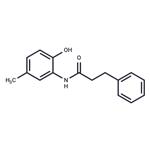AA147 (393121-74-9) is a preferential activator of the ER stress sensing protein ATF6.1 It was able to selectively reduce secretion and extracellular aggregation of destabilized amyloidogenic variants of TTR and LC proteins. AA147-dependent ATF6 activation proceeds via metabolic activation to a reactive electrophile that selectively modifies ER proteins including multiple protein disulfide isomerases.2? AA147 suppressed pluripotency and promoted human stem cell differentiation toward a mesodermal lineage via ER expansion.3? It protected the heart against ischemia/reperfusion (I/R) injury in a mouse model of acute myocardial infarction in an ATF6-dependent manner.4 Brain, kidney, and liver tissue was also protected from I/R damage and impaired proteostasis. AA147 reduced infection of multiple strains of dengue and Zika viruses in an ATF6-independent manner.5 Protects against glutamate-induced cell death is a neuronal-derived cell culture model.6 See companion inhibitor 10-3974.
Plate et al. (2016), Small molecule proteostasis regulators that reprogram the ER to reduce extracellular protein aggregation; Elife 5 e15550
Paxman et al. (2018), Pharmacologic ATF6 activating compounds are metabolically activated to selectively modify endoplasmic reticulum, proteins; Elife 7 e37168
Kroeger et al. (2018), The unfolded protein response regulator ATF6 promotes mesodermal differentiation; Sci. Signal. 11 eaan5785
Blackwood et al. (2019), Pharmacological ATF6 activation confers global protection in widespread disease models by reprogramming cellular proteostasis; Nat. Commun. 10 187
Almasy et al. (2021), Small molecule endoplasmic reticulum proteostasis regulator acts as a broad-spectrum inhibitor of dengue and Zika virus infections; Proc. Natl. Acad. Sci. USA 118 e2012209118
Rosardo et al. (2021), Metabolically Activated Proteostasis Regulators against Glutamate Toxicity by Activating NRF2; ACS Chem. Biol. 16 2852


